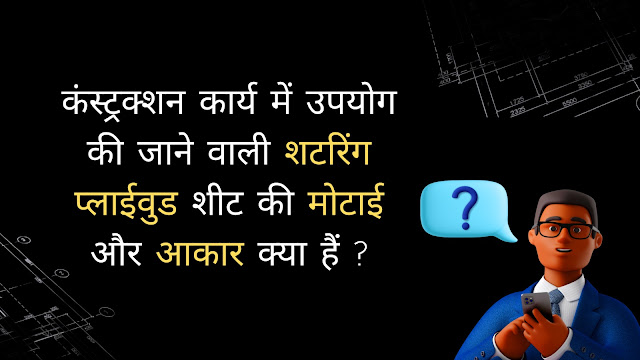Why Builders Love Shuttering Plywood:
- Super Strong: It holds heavy wet concrete without bending, making it ideal for concrete formwork.
- Smooth Finish: Provides concrete with a clean, desirable look, reducing the need for extensive post-finishing work.
- Waterproof: Resists damage from water or cement, making it a perfect construction material.
- Reusable: Can be used multiple times, offering significant cost savings over a project's lifespan.
- Light & Sturdy: Easy to handle and move around while maintaining exceptional strength.
- Perfect Shape: Ensures concrete achieves the exact desired size and shape, essential for precise building construction.
Shuttering Plywood Manufacturers and Top 10 Brands
India's booming construction industry has created high demand for quality shuttering plywood. Here are the leading companies manufacturing it, with HESA Shuttering Plywood making a rapid ascent!
1. HESA Shuttering Plywood: Rapidly gaining popularity, HESA Plywood, manufactured by AK Panels Pvt Ltd, Punjab (India), is a top contender. Its superior strength comes from special glues and tough wood. It delivers a super smooth finish to concrete and boasts high reusability. Builders commend it as one of the best shuttering plywood options in India for demanding jobs. The material is available with red and black film, in thicknesses of 12 mm (30, 34 kg) and 18 mm (45, 50 kg). All HESA material is 100% waterproof and ISI approved.
2. Century Plyboards (India) Ltd.: A household name in the industry, Century Ply manufactures strong shuttering plywood using quality wood and specialized waterproof glue. Trusted globally for construction projects, this brand is committed to offering premium quality products. Their shuttering plywood is made using selected hardwood veneers bonded with phenolic resin.
4. Kitply Industries Ltd.: Kitply Industries Limited is a prominent Indian manufacturer of plywood and blockboard, including shuttering plywood. Founded in 1982 by Shri S.P. Goenka and Shri P.K. Goenka, they specialize in producing durable and reliable shuttering products for the construction industry, utilizing hardwood veneers and phenolic resin.
5. Sarda Plywood Industries Ltd.:A respected name in the market, Sarda Plywood Industries Ltd (SPIL), known for its flagship brand DURO, has been manufacturing plywood and other engineered wood products for over 60 years. They are a major player in the Indian plywood market, with a strong presence in North India and expanding to other regions. SPIL manufactures a wide range of plywood products, including shuttering plywood.
7. Austin Plywood Pvt. Ltd.:Founded by Mr. Surendra Kumar Agarwal and Mr. Nishant Agarwal, Austin Plywood is a leading player in the interior infrastructure industry, celebrating 18 years since its establishment in 2006. Known for using premium wood, Austin Plywood produces strong and long-lasting shuttering ply.
9. Greenply Industries Ltd.: As one of India's largest manufacturers, Greenply Plywood is known for its precision, strength, and consistent thickness, making it excellent for formwork solutions. Established in 1984, the company initially started with a sawmill. In 1990, it was incorporated as Mittal Laminates Pvt Ltd, later changing its name to Greenply Industries Limited in 1996.
10. Duroply Industries Limited: Duro Plywood, from Duroply Industries, has been a trusted name for over 60 years. Duro Plywood is a renowned brand, recognized for its high-quality plywood for construction and its commitment to using superior materials.
Picking the right shuttering plywood is crucial for any building project. Choose from these top brands to ensure your structures are strong, stable, and durable for years to come!

































